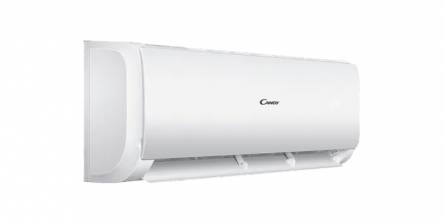Silicon Wafer: Prepration, Testing and Uses
What is a Silicon Wafer?
Silicon wafers are also known as disc in more general term. These are thin and very glossy slice of a silicon that are fabricated using specialized techniques. silicon is the most abundant element in nature, after oxygen. Most wafers are made of silicon extracted from sand. They can be shaped and fabricated into a variety of sizes and diameters.
Parts of a Typical Wafer:
Each part of a finished wafer has a different name and function.
1. Chip: This is a tiny piece of silicon with an electronic circuit pattern to built over it.
2. Scribe Lines: These are very fine, non-functional gaps between the functional pieces of wafer. Scribe lines help to safely cut the Silicon wafer without damaging the built in circuit network.
3. TEG (Test Element Group): It is a prototype pattern which helps in revealing the real characteristics of the Silicon chip. The silicon transistors, capacitors, resistors, diodes and circuits can be tested for their proper functionality.
1. Edge Die: These work around the edge of a wafer. They help to reduce the loss of silicon during the production process of larger wafers.
2. Flat Zone: The Flat Zone is one edge of a wafer cuts off flat to help identify the wafer’s orientation and type.
Fabrication of Silicon Wafers, From an Ingot:
Silicon wafer fabrication is an important part of the growth of technological advancements in the semiconductor industry. Silicon is abundantly found element in the earth’s crust, extracted from sand using different processes. After extraction of Silicon, it is purified to remove any impurities.
First, silicon is heated until it melts down to a high-purity liquid. Afterwards, it is solidified into form a silicon ingot. The most techniques used to form ingot is Czochralski process. This process is also known as Floating Zone method. The popular Czochralski method makes use of a tiny piece silicon seed. This seed is later placed inside the molten silicon bath to be slowly pulled out in rotation. It results in the production of cylindrical ingot. This is why the finished wafers are all round discs.
Wafer testing process after Fabrication:
This is the final step of semiconductor device fabrication. The wafer testing is performed with the help of wafer prober. In this step, the wafer is sent for die preparation, where integrated circuits are present on the wafer. They are tested for functional defects. There are several processes of wafer testing, the wafer testing is known by following names:
1. Wafer Final Test
2. Silicon Test Wafers
3. Electronic Die Sort
4. Circuit Probe
Wafer Prober
A wafer prober is a device which is used to test the integrated circuits and Silicon wafer. For electrical testing a set of microscopic probes using probe card a vacuum-mounted on a wafer chuck, is stimulated with the electrical contact. Once you finish the test on an array, it is moved to the wafer to the next array. This starts the next test for the wafer prober.
The wafer prober is responsible for loading and unloading the wafers. They are equipped with automatic pattern recognition optics. These optics are capable of aligning the wafer with sufficient accuracy. This is essential to ensure exact listing between the contact pads on the wafer and the tips of the probes.
The wafer probe can help for Silicon Test Wafers circuitry on the wafer scribe lines. Many companies utilize this test information for the device performance from these scribe line test structures.
Uses of Silicon Wafers:
Silicon is considered to be a high-ranking semiconductor, it can serve multiple purposes in the modern day industry. Silicon wafers are commonly used to manufacture chips and microchips in electronic devices. Because of their characteristics to flow electricity through silicon wafers, these semiconductors are used to build integrated circuits or ICs. Integrated circuits are used in a range of electronic devices.
Similar Articles
Discover why spring-loaded pogo pins are essential in modern electronics, offering reliable, durable connections that boost performance in diverse applications.
Smart TVs have revolutionized the way we consume entertainment. With advanced technology and diverse functionalities, they have become a staple in modern homes. Among the numerous options available, an Android smart TV stands out for its unique features and flexibility, offering an immersive viewing experience
When shopping for an amplifier for sale, it's important to understand what "budget-friendly" really means. A budget-friendly amplifier doesn't necessarily imply poor quality or limited features
Inverter air conditioners have gained significant popularity over the past few years due to their energy efficiency and superior performance compared to traditional air conditioners. However, with this rise in popularity, various myths and misconceptions have also emerged.
Discover 5 key ways industrial switches boost efficiency in automation, enhancing performance, reliability, and scalability in industrial environments.
In the age of interconnected devices and smart technology, the humble television has evolved from a mere entertainment appliance to a central hub within the modern home ecosystem. With the advent of smart LED TVs, homeowners now have the opportunity to seamlessly integrate entertainment, connectivity, and automation into their living spaces.
It is true to say that technology has transformed our lives in many positive ways and although there are people out there who think that technology is ruining society, in the vast majority of cases, only good things are happening. The introduction of the Internet has changed how we go about our daily lives, how we do our jobs and how we do our shopping
In today's fast-paced world, where the roads are more congested than ever, the significance of au
Extension cords are the type of items you are bound to find in any home or workplace.









